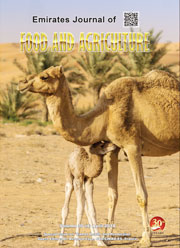Vitamin B12 Content in Lamb Meat: Effect of Cooking and Freezing Temperatures
DOI:
https://doi.org/10.9755/ejfa.2023.v35.i2.3016Abstract
The meat industry has taken several measures to expand its shelf life, such as frozen storage and thermal treatments. Hence, the valuable content in red meat, such as vitamin B12, could be affected by this handling. This study aimed to assess the vitamin B12 losses in Algerian Hamra lamb meat caused by frozen storage (06 months at -18 °C) and boiling for 45 minutes at 80 °C with regard to modifications in water-holding capacity (WHC). Samples of Longissimus lumborum (LL) and Longissimus thoracis (LT) were utilized to assess this micronutrient using microbiological assay (VitaFast®). In comparison with Fresh Raw Meat (FeRM), Frozen Raw Meat (FoRM) was marked by a reduced difference in B12 content (1.36 ± 0.14 vs. 1.19 ± 0.12 µg/100 g, respectively). However, the values of B12 decreased significantly in Fresh Boiled Meat (FeBM) (0.78 ± 0.40) and Frozen Boiled Meat (FoBM) (1.00 ± 0.07) compared to FeRM. The recorded values of cooking loss (CL) and forced drip loss (FDP) appeared identical. The B12 vitamin content in Hamra lamb meat is generally affected by cooking processes (longer time and higher temperature treatments) than short freezing storage (less than 06 months at – 18 °C).
Keywords: B12 vitamin; Cooking; Freezing storage; Lamb meat; Microbiological assay.
Downloads
Published
How to Cite
Issue
Section

This work is licensed under a Creative Commons Attribution-NonCommercial 4.0 International License.











 .
. 